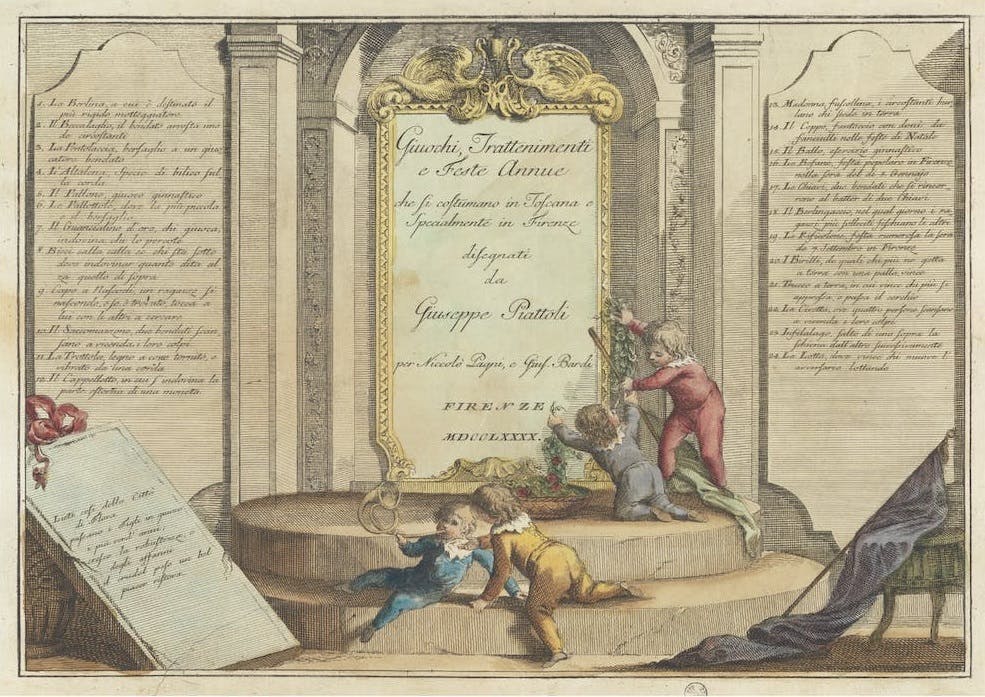Giuochi, Trattenimenti e Feste Annue che si costumano in Toscana e specialmente in Firenze, by Niccolò Pagni, and Gius. Bardi, Florence 1790
Giuseppe Piattoli (Firenze 1743 – 1823), Carlo Lasinio (Treviso – Pisa 1838)
Giuseppe Piattoli, Carlo Lasinio,
,
GDSU, invv. 14997-15021 St. vol.
Niccolò Pagni and Giuseppe Bardi were two very active publishers in Florence in the last two decades of the 18th and early 19th century. When they embarked on this publishing project, which saw the light of day in 1790, they had already published another volume of prints with popular themes, which had been well received: the Raccolta di quaranta proverbi toscani (1786). After Proverbs and Giuochi, they returned again to a similar theme with I contadini della Toscana espressi al naturale secondo le diverse loro vestiture (1796). All three works involved the professor of 'carving' at the Accademia di Belle Arti in Florence, Carlo Lasinio, as engraver of the copper matrices or as supervisor of their execution. The volume on the Giuochi, in particular, also involved another professor from the same academy, Giuseppe Piattoli, who was responsible for the preparatory drawings for the prints.
Carlo Lasinio, a native of Treviso, had been working in Florence since at least 1779. He was a very prolific reproduction engraver, who adopted and reworked engraving techniques with the precise aim of obtaining colour prints. He was therefore a great experimenter, at least until his appointment as conservator of the Pisa Cemetery in 1807, a prestigious position that absorbed his work greatly.
He had learned the technique of printing with three or four plates engraved and each inked with a different colour from the Frenchman Edouard Gautier Dagoty during the latter's stay in Florence. This technique involved superimposing various monochrome impressions, which produced specific colour effects and shading on the sheet. He also used the so-called "à la poupée" technique, with the inking of several colours on the same plate thanks to the use of small pads and templates. For this volume, however, he adopted the more traditional etching, where the copper matrix was engraved with acid, then coloured by hand with watercolours.
The series consists of a title page plus twenty-four panels dedicated to as many games. Only two of them bear the signature of Lasinio, who probably limited himself to technical and stylistic supervision for the others. The illustrations of the games - which are not only linked to the world of childhood, but more frequently have adults as protagonists - become the pretext for a description of late 18th century Florence, with its characters and characteristic views. Although the title of the work expressly refers to Tuscan and Florentine customs, various games, entertainments and festivals presented here, with variants or different names, reflect well-established traditions in other geographical areas as well.
The volume was purchased by the bookseller Tammaro De Marinis in 1909 for the collection of the Gabinetto Disegni e Stampe degli Uffizi, which holds numerous engravings by Carlo Lasinio, either separately or gathered in collections.
P. Cassinelli, Carlo Lasinio. Incisioni, Firenze 2004, pp. 47-52
